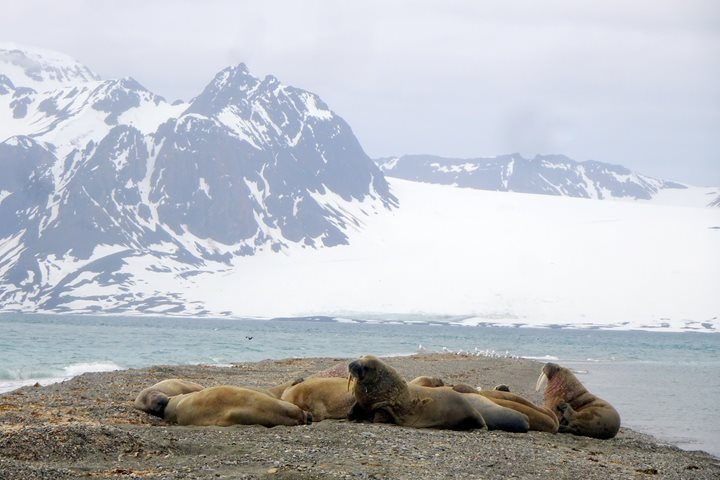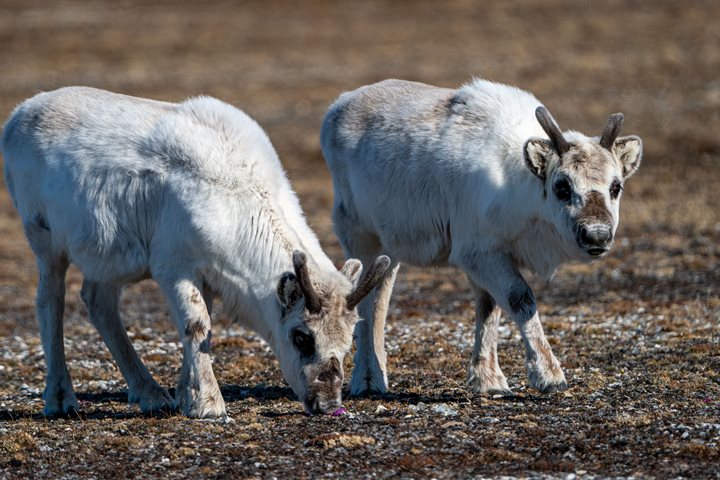Our fourth day on the National Geographic Explorer began as we rumbled through last year’s pack ice on a quest for the famous ice bear. It was destined to be a four-bear day. As we strained eagerly through early morning snow and fog we spotted a sow and her cub meandering across the ice. The ship crept forward, cracking and crunching through the ice, and it was clear that that the pair was curious but unconcerned about the approach of our vessel. Despite the driving snow and icy wind, the ship’s compliment looked on in quiet awe as we soaked in this rare and beautiful sight. After several minutes, the sow led the cub across breaks in the ice and off into the distance.
In the afternoon, we zigzagged through the pack ice of Erik Eriksen Strait and were delighted to see two more ice bears. Found asleep, both bears were likely male, as indicated by their long necks and the scars on their snouts. The bears became aware of the ship and examined it with casual interest. The ice bears noted our presence, ambled around and returned to their peaceful sleeping states before our departure. As we observed the bears, an ivory gull circled the ship. This circumpolar bird soars above pack ice and often feeds on the remnants of polar bear kills.
After dinner we continued to towards the Austfonna icecap on the island of Nordaustland. Cruising alongside the glacial face of Bråsvellbreen we spotted a bearded seal hauled out on ice. The Austfonna icecap stretches for over 100 miles and combined with the ice from Vestfonna the ice covers 80% of the island, making it the third largest icecap in the world. In the area we visited the sheer cliffs of the ice shelf rose 70 feet above the water and 35 feet below. Because the ice is sheer and the sea floor is quite deep in that area, the ship’s guests were able to see the pale blues, thin sedimentary layers, and crystalline angles up close at what seemed like touching distance.
In addition to all of today’s sightings we heard a lecture about plant adaptations in the high Arctic by Andrew Clarke, the natural history of polar bears by Magnus Forsberg, and the photographic insights and adventures of National Geographic photographer Susan Seubert.






